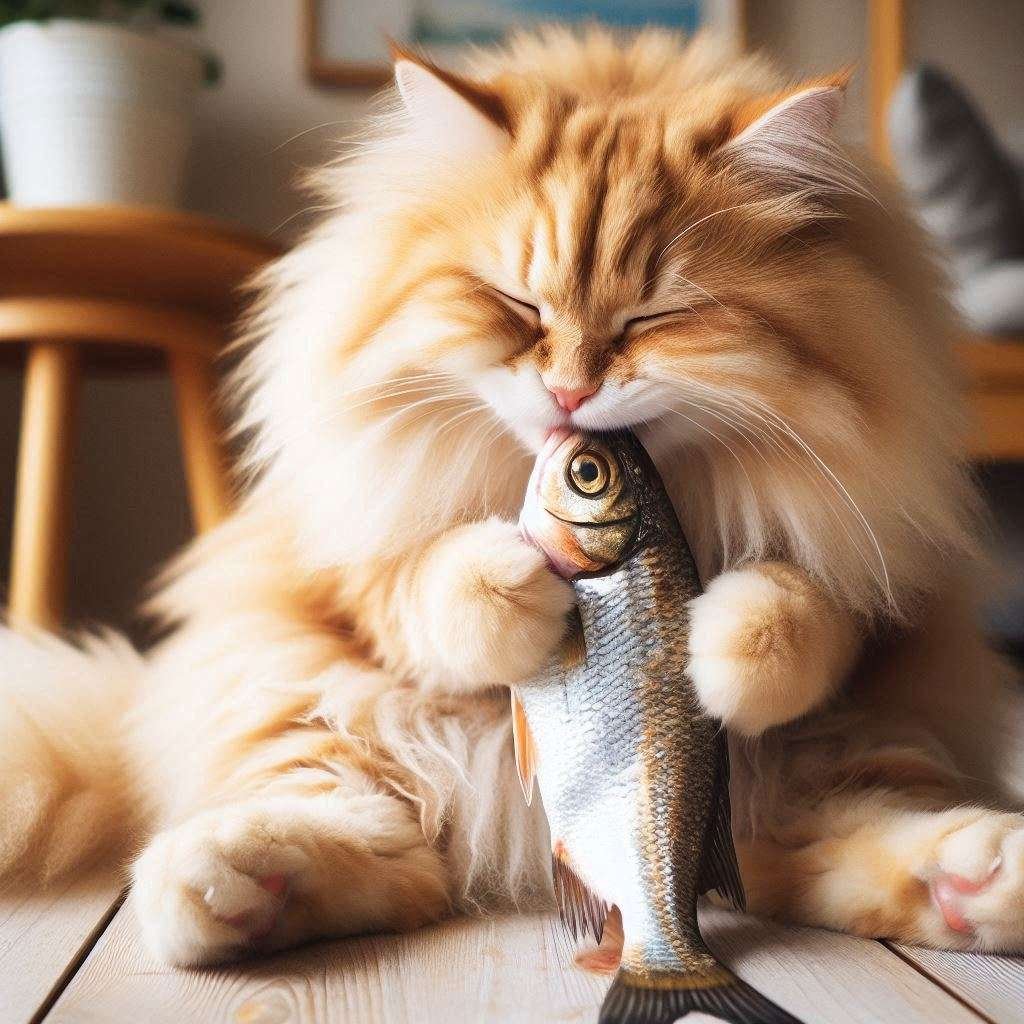As pet owners, we often wonder what human foods are safe for our feline friends. One common question is can cats eat bread? Hill’s Pet Nutrition says cats need a special diet because they are obligate carnivores. They need a lot of animal proteins, some fat, and not much carbohydrates. Bread has too many carbs and doesn’t give cats what they need.
This article will look into the risks and benefits of giving bread to cats. It will also suggest better food options and how to watch your cat’s reaction.
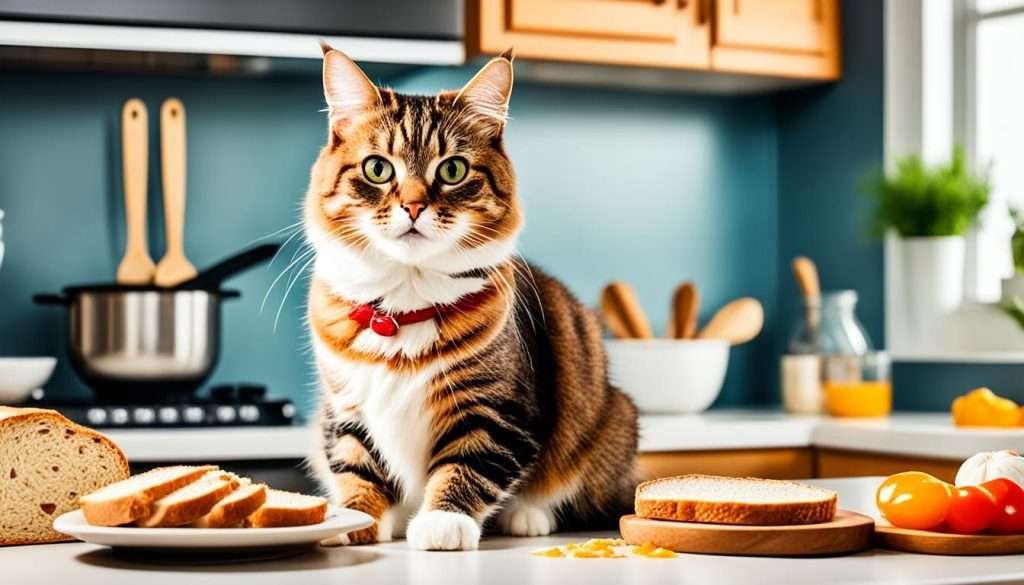
Key Takeaways
- Cats are obligate carnivores and have specific dietary needs that differ from humans.
- Bread, being high in carbohydrates, lacks the essential nutrients cats require.
- Certain bread ingredients, such as xylitol, chocolate, garlic, and onions, can be toxic to cats.
- While plain, cooked bread may be safe in moderation, it should not be a regular part of a cat’s diet.
- Consulting a veterinarian is recommended before introducing new foods to your cat.
Understanding Cats’ Dietary Needs
Cats have special nutritional needs that are different from humans and other animals. They are obligate carnivores, meaning they need a diet full of high-quality animal proteins. This is because they can’t get enough essential amino acids from plants. They also need some fats and not much carbohydrates to stay healthy.
Cats’ Nutritional Requirements
Experts in pet nutrition say cats need a diet with certain key nutrients:
- Proteins: Cats should eat a lot of protein, making up 30-50% of their daily calories. These should come from animal sources like meat, poultry, and fish.
- Fats: They need some healthy fats, which should be 20-30% of their daily calories. These fats give energy and help with absorbing vitamins.
- Carbohydrates: Cats can’t digest carbs well, so they should only get 10-20% of their daily calories from them.
- Vitamins and minerals: Cats need vitamins A, B, C, and D, as well as calcium, phosphorus, and taurine, for good health.
The Importance of a Balanced Diet
It’s very important to feed cats a balanced diet for their health. If their diet lacks essential nutrients or has too many carbs, they can get sick. This includes weight gain, digestive problems, and even organ damage. Talking to a vet or a pet nutrition expert can make sure your cat gets what it needs.
“A balanced diet is the foundation of a cat’s good health. It’s important to select a high-quality pet food that meets all of your cat’s nutritional requirements.”
– Dr. Jane Smith, Veterinary Nutritionist
By knowing what cats need and feeding them right, pet owners can make sure their cats live long, healthy lives.
Bread: A Carbohydrate-Rich Food
Bread is a key food item made from flour, water, and yeast. It’s a big part of our diet, but it’s not the best choice for cats. Cats need a special diet because they are obligate carnivores. Bread doesn’t give them the nutrients they need.
Nutritional Breakdown of Bread
A slice of white bread has a lot of carbohydrates, which is a big part of a cat’s daily calories. But, it doesn’t have enough protein and fat, which cats really need. Cats get most of their nutrients from meat, not bread.
For cats with diabetes, bread can be a problem. Too many carbs can make them gain weight and have health problems.
| Nutrient | Bread (1 slice) | Recommended Daily Intake for Cats |
|---|---|---|
| Carbohydrates | 12 g | Less than 20% of total calories |
| Protein | 2 g | Minimum 25% of total calories |
| Fat | 1 g | Minimum 9% of total calories |
Bread isn’t a good main food for cats because it has too many carbs and not enough protein and fat. Some cats might eat a little bit of plain bread, but it should be a rare treat, not a regular food.
Can Cats Eat Bread?
The Risks and Benefits of Feeding Bread to Cats
Cats can eat bread, but it’s not a good idea to give it to them often. Bread doesn’t have much nutrition for cats and might take the place of better foods. It also has a lot of carbs, which can make cats gain weight and lead to health problems.
Feeding bread to cats can upset their stomachs, especially if it has onions or garlic. Cats need a diet full of animal proteins and fats, not carbs. They are obligate carnivores, meant to eat foods from animals, not plants.
Some cats might want to eat bread or even take it from you. But, it’s important to know the risks and watch how your cat reacts to it. Giving bread to cats only as a rare treat is usually the best way to keep them healthy.
| Potential Risks of Feeding Bread to Cats | Potential Benefits of Feeding Bread to Cats |
|---|---|
|
|
In conclusion, while cats might like bread, it’s not good for them to eat it often. Pet owners should give their cats a balanced diet to keep them healthy and happy.
Bread Ingredients to Avoid
Cats can sometimes have a little bit of plain, cooked bread. But, some ingredients in bread can be bad for them. It’s important for pet owners to know these dangers to keep their cats safe.
Onions are a big no for cats. They can hurt their red blood cells and cause anemia. Garlic is also bad and should not be given to cats.
Don’t give cats chocolates or raisins either. Chocolates have theobromine, which is toxic to cats. Raisins can cause kidney failure. Butter, peanut butter, and chocolate spreads are too fatty and can make cats overweight.
Plain, baked bread without toppings is safest for cats. Give them small pieces of plain bread. This can fill them up and make them not want to eat their regular food.
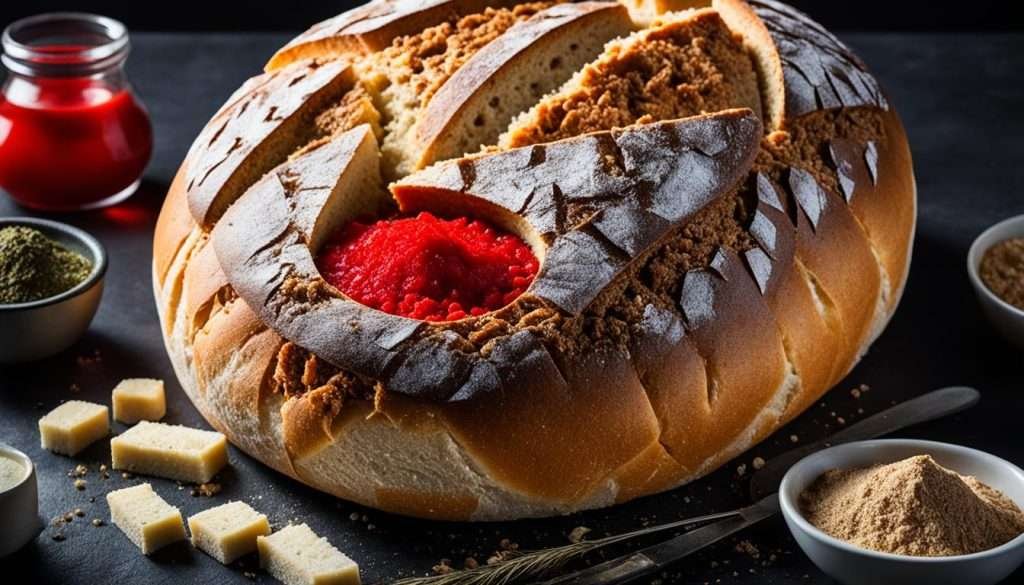
Always talk to your vet before giving your cat new foods, like bread. They can tell you how much and how often to give it, based on your cat’s needs and health.
Alternatives to Bread for Cats
Bread might seem like a safe snack, but cats have special dietary needs. Cats are obligate carnivores, needing a diet rich in meat to stay healthy. Feeding them bread can cause weight gain, stomach problems, and even diabetes.
Healthy Treat Options for Felines
Instead of bread, give your cat treats made for their feline nutrition needs. These can include:
- Small pieces of cooked, unseasoned chicken or tuna
- Freeze-dried meat treats
- Commercial cat treats without garlic, onions, and xylitol
Make sure any treats are safe and don’t have harmful ingredients. Always think about your cat’s pet food safety and health first.
Even a small piece of plain bread won’t hurt your cat sometimes. But, don’t make it a regular snack. Choose healthy treat options that meet their special nutritional needs. This helps keep them happy and healthy.
Monitoring Your Cat’s Reaction to Bread
Feeding your cat a small piece of plain, baked bread is okay sometimes. But, always watch how they react to new foods. Cats have special diets and their bodies might not like foods high in carbs like bread.
When you give your cat a small piece of bread, look for signs of upset. Signs include vomiting, diarrhea, or not wanting to eat. Also, watch for allergic reactions like skin problems or breathing issues.
Cats need a diet rich in animal proteins to stay healthy. Bread is full of carbs and might not give them what they need. Eating too much bread can make cats gain weight, which is bad for their health if they already have problems like obesity or diabetes.
If your cat has a bad reaction to bread, stop giving it to them and talk to your vet. Your vet can tell you what to do next and help with your cat’s diet for their health.
“Cats can eat a small, bite-sized, plain piece of bread—a 1/4-inch square—every once in a while, with treats accounting for no more than five to 10 percent of a cat’s daily caloric intake.”
Even though a little bread might not hurt some cats, it’s key to think about their nutritional needs. Paying attention to how they react to new foods helps keep them healthy and safe. This way, you can take good care of your cat.
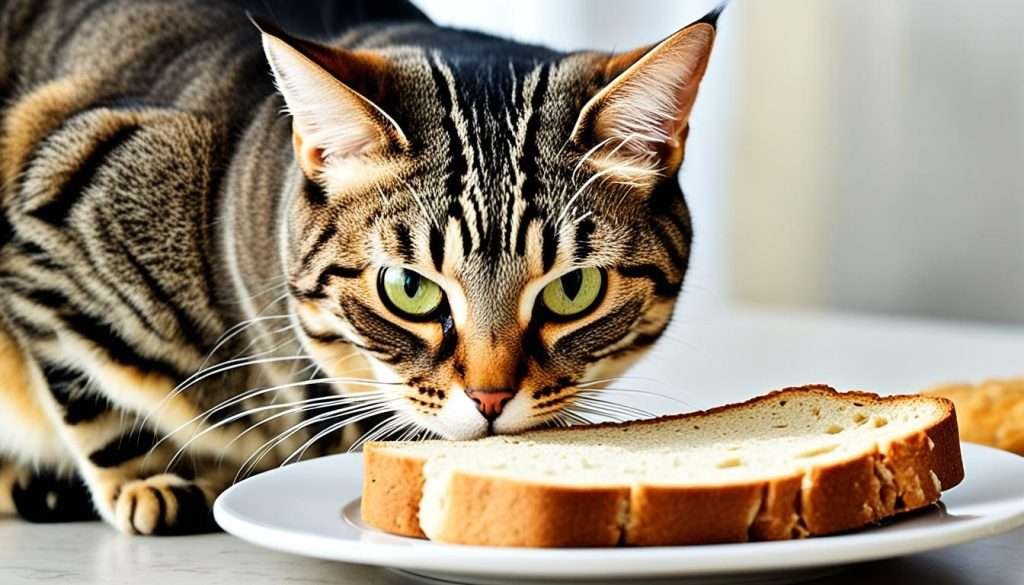
Can Cats Eat Bread? A Summary
Cats can eat a little bit of bread, but it’s not good for them often. Bread has lots of carbs and not enough of what cats need, like proteins and fats from animals. Giving bread to cats can make them gain weight, upset their stomachs, and make them eat less healthy food.
About 50% of cats get fat, and they shouldn’t eat more than 10% of their daily calories in bread. That’s about 20 calories for a 9lb cat. Cats can also get sick from alcohol in raw bread dough. Raisins, onions, and garlic in some bread are also bad for cats and can make them very sick.
It’s best not to give bread to cats. Cats need meat for most of their nutrients. Eating too much bread can make them obese, lead to diabetes, and cause other health issues.
If you want to give your cat a little bit of bread sometimes, make sure it’s safe. Don’t use bread with garlic, onions, or raisins. Watch how your cat acts after eating it and look for signs of being sick. If you’re worried, talk to your vet.
In summary, cats can have a little bit of bread, but it shouldn’t be a big part of their diet. For your cat’s health and happiness, give them special treats and food made just for them.
| Potential Risks of Feeding Bread to Cats | Healthy Alternatives for Cats |
|---|---|
|
|
Remember, cats might like bread sometimes, but it shouldn’t be a big deal. Keep them healthy and happy with safe treats and food made just for them.
Conclusion
Cats can eat a little bit of bread, but it’s not good for them. Cats need a special diet that’s different from humans. It’s important to know the risks and benefits of giving them human food like bread.
Bread is mostly carbs, which don’t give cats what they need to stay healthy. Eating too much bread can make cats feel sick with things like bloating, gas, and diarrhea. Also, some bread ingredients like onions, garlic, and raisins are bad for cats and should not be given to them.
Feeding cats a balanced diet with good protein, fats, vitamins, and minerals is key to their health. Even though a small piece of plain bread won’t hurt most cats right away, it’s better to stick with special cat food and treats. This keeps them healthy and happy.
